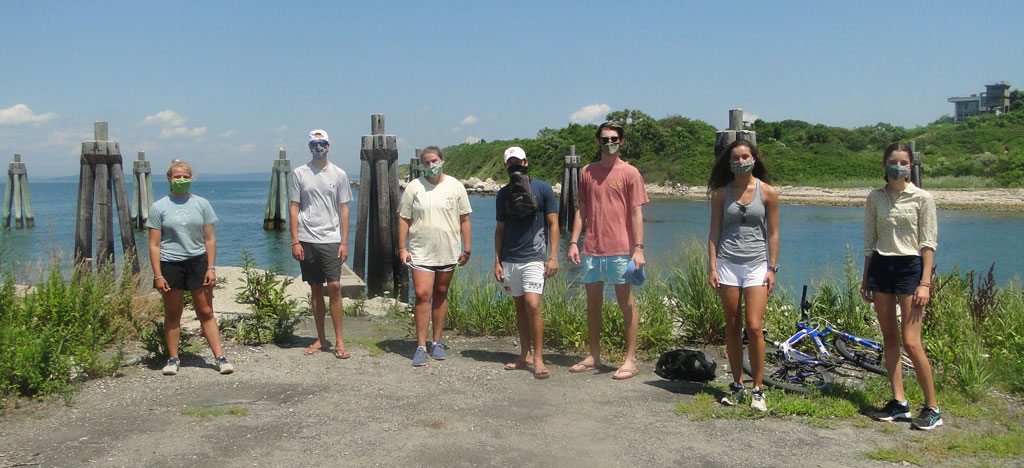 2020 Island Sentinels (l-r): Caroline Toldo, Nicolas Hall, Izzie Reid, Wilson Thors, Gardner Thors, Betsy Conger and Alexa Rosenberg. (Marc Rosenberg missing from picture.) Stephanie Hall Photo
2020 Island Sentinels (l-r): Caroline Toldo, Nicolas Hall, Izzie Reid, Wilson Thors, Gardner Thors, Betsy Conger and Alexa Rosenberg. (Marc Rosenberg missing from picture.) Stephanie Hall Photo
FIConservancy’s Island Sentinels program, established in 2014, provides environmentally passionate students from both Fishers Island School and the seasonal community the opportunity to observe and monitor flora, fauna, insects, marine life and birds across the Island. This experience, combined with discussion and guidance, is creating future stewards of our environment.
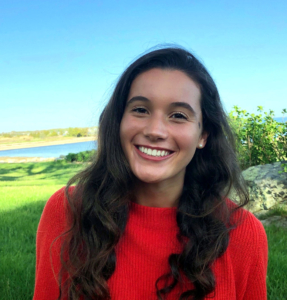
Betsy Conger, 18, lives in Stonington, Conn. She will be a freshman at Sewanee: The University of the South this fall and plans to major in Biology. She is an alumna of Fishers Island School, where she attended 6th-12th grade, commuting daily via ferry.
Betsy’s interest in environmental studies started in science classes, where teachers utilized the Island as a living laboratory. She was intrigued by the Island’s ecology and became an Island Sentinel to learn more about the environmental work taking place here. Betsy volunteered as a Sentinel in 2016 and 2017, before officially working as a Sentinel in 2018, helping to monitor ecological sites across the Island.
In the summer of 2018 and 2019, Betsy participated in the Sewanee Environmental Institute (SEI), where she learned about ecosystems, plant and animal species, archeological techniques, GPS and GIS technology and conservation strategies that she shared when she returned to the Island. She also learned the importance of caring for the environment, not just on Fishers Island, but globally, because all ecosystems are interconnected.
Betsy’s environmental stewardship extends beyond FIConservancy. As chair of the environmental committee for the East Lyme Leo Club chapter, an internationally recognized youth volunteer organization, she designed and organized the distribution of reusable grocery totes. Over 400 bags were distributed to shoreline residents.
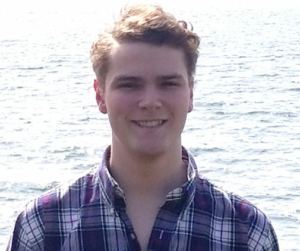 Nicolas Hall, 18, has lived on Fishers Island his whole life and is a sophomore at Dalhousie University in Halifax, Nova Scotia, where he is majoring in Oceanography. This is his third year as an Island Sentinel, including one winter of volunteering. Nick has a passion for the ocean whether sailing, fishing, spearfishing or simply going to the beach. He loves to monitor sites and immerse himself in Fishers flora and fauna. In addition to monitoring, Nick volunteers for the Fishers Island Seagrass Management Coalition helping them protect Fishers Island’s beautiful eelgrass meadows. Nick looks forward to furthering his knowledge and understanding of wildlife on and around the Island.
Nicolas Hall, 18, has lived on Fishers Island his whole life and is a sophomore at Dalhousie University in Halifax, Nova Scotia, where he is majoring in Oceanography. This is his third year as an Island Sentinel, including one winter of volunteering. Nick has a passion for the ocean whether sailing, fishing, spearfishing or simply going to the beach. He loves to monitor sites and immerse himself in Fishers flora and fauna. In addition to monitoring, Nick volunteers for the Fishers Island Seagrass Management Coalition helping them protect Fishers Island’s beautiful eelgrass meadows. Nick looks forward to furthering his knowledge and understanding of wildlife on and around the Island.
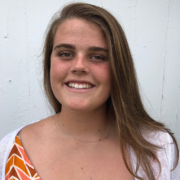
Isabelle “Izzie” Reid is a rising junior at Elon University majoring in Strategic Communications with a minor in Human Services. She is new to the Island Sentinels team this summer, but Fishers has been a part of her life for over 20 years. Isabelle went to Tabor Academy, where she studied Environmental Science, Oceanography, Fish & Fisheries. Her years by the sea instilled an appreciation for marine wildlife. Over the past couple months, Isabelle has enjoyed discovering more of our Island wildlife through the Island Sentinels and Seagrass Management Coalition programs and looks forward to exploring more of the Island!
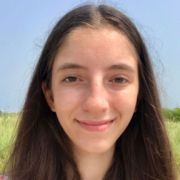 Alexa Rosenberg, 15, is a sophomore at Hunter College High School in New York City. She started as an Island Sentinel in the summer of 2019 and is very grateful for all the wonderful experiences she has had with the team. She has been coming to Fishers Island for as long as she can remember and has enjoyed learning about the fascinating Island wildlife. Alexa appreciates that the program has helped her to take a more active role in the protection and preservation of the Island.
Alexa Rosenberg, 15, is a sophomore at Hunter College High School in New York City. She started as an Island Sentinel in the summer of 2019 and is very grateful for all the wonderful experiences she has had with the team. She has been coming to Fishers Island for as long as she can remember and has enjoyed learning about the fascinating Island wildlife. Alexa appreciates that the program has helped her to take a more active role in the protection and preservation of the Island.
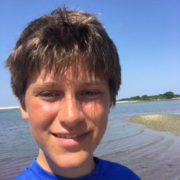
Marc Rosenberg, 16, lives in New York City and is a junior at Bronx High School of Science. 2018 was his “volunteer” year and first summer as an Island Sentinel. He joined the Sentinel program because he was interested in sea life and wildlife on Fishers Island.
Marc’s interest in sea life was sparked when he vacationed in Greece and observed a multitude of fish through his goggles. After that experience, Marc became increasingly curious about wildlife on and around Fishers Island. His trip to Costa Rica helped him experience more underwater life and renewed his passion for marine biology. This summer, Marc hopes to continue monitoring as well as working on monitoring water quality for the Fishers Island Seagrass Coalition.
Marc enjoys spending time under water and made a video of seagrass off the coast of Fishers Island. See Marc’s video.
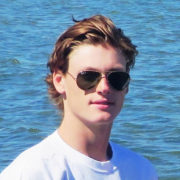
Gardner Thors, 18, lives in New York City and is a freshman at Colgate University in Hamilton, New York. This is his seventh summer as an Island Sentinel, after volunteering for one summer. Throughout his childhood, growing up in the urban environment of Manhattan, Fishers Island has been his natural sanctuary. Gardner has been summering here for as long as he can remember, and Fishers holds a special place in his heart. That is why he chose to play a part in the preservation of this environment. With eight years of environmental preservation experience on the Island and schooling in ecology, conservation biology and other areas of environmental studies, Gardner looks forward to sharing his experiences and what he has learned with the Island community, as well as to continue to gather crucial data about the ever-changing ecology of Fishers Island. His brother, Wilson, is also a passionate Sentinel.

Wilson Thors lives in New York City and is a rising Junior at Groton School in Massachusetts. 2017 was his first summer as a Sentinel, although he volunteered to monitor for FIConservancy the year before. Initially, he joined the Island Sentinel program because he was curious about his brother’s experiences as a Sentinel and wanted to take an active role in supporting the environmental community of Fishers Island.
Through his two years as a Sentinel, Wilson has not only learned more about the ecological trajectory of Fishers Island, especially concerning the eelgrass meadows, but also how to direct it forward. Wilson has always appreciated the natural beauty of Fishers Island, but now he has a deeper love of the Island since learning more about the wildlife and learning that we share such a great Island with it.
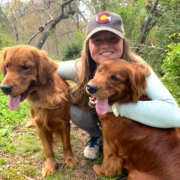
Caroline Toldo is a third-year student at Loyola University Chicago, double majoring in Environmental Studies and Environmental Policy with a minor in Environmental Activism and Leadership. She lived on Fishers Island from the age of 12 and graduated from Fishers Island School in 2018. Caroline is looking to further educate herself on the humanitarian side of the ecological crisis, aiming to learn how to spread awareness. She is interested in furthering her education by getting a masters degree in Oceanographic Studies.
2020 Island Sentinels
News, SentinelsFIConservancy’s Island Sentinels program, established in 2014, provides environmentally passionate students from both Fishers Island School and the seasonal community the opportunity to observe and monitor flora, fauna, insects, marine life and birds across the Island. This experience, combined with discussion and guidance, is creating future stewards of our environment.
Betsy Conger, 18, lives in Stonington, Conn. She will be a freshman at Sewanee: The University of the South this fall and plans to major in Biology. She is an alumna of Fishers Island School, where she attended 6th-12th grade, commuting daily via ferry.
Betsy’s interest in environmental studies started in science classes, where teachers utilized the Island as a living laboratory. She was intrigued by the Island’s ecology and became an Island Sentinel to learn more about the environmental work taking place here. Betsy volunteered as a Sentinel in 2016 and 2017, before officially working as a Sentinel in 2018, helping to monitor ecological sites across the Island.
In the summer of 2018 and 2019, Betsy participated in the Sewanee Environmental Institute (SEI), where she learned about ecosystems, plant and animal species, archeological techniques, GPS and GIS technology and conservation strategies that she shared when she returned to the Island. She also learned the importance of caring for the environment, not just on Fishers Island, but globally, because all ecosystems are interconnected.
Betsy’s environmental stewardship extends beyond FIConservancy. As chair of the environmental committee for the East Lyme Leo Club chapter, an internationally recognized youth volunteer organization, she designed and organized the distribution of reusable grocery totes. Over 400 bags were distributed to shoreline residents.
Isabelle “Izzie” Reid is a rising junior at Elon University majoring in Strategic Communications with a minor in Human Services. She is new to the Island Sentinels team this summer, but Fishers has been a part of her life for over 20 years. Isabelle went to Tabor Academy, where she studied Environmental Science, Oceanography, Fish & Fisheries. Her years by the sea instilled an appreciation for marine wildlife. Over the past couple months, Isabelle has enjoyed discovering more of our Island wildlife through the Island Sentinels and Seagrass Management Coalition programs and looks forward to exploring more of the Island!
Marc Rosenberg, 16, lives in New York City and is a junior at Bronx High School of Science. 2018 was his “volunteer” year and first summer as an Island Sentinel. He joined the Sentinel program because he was interested in sea life and wildlife on Fishers Island.
Marc’s interest in sea life was sparked when he vacationed in Greece and observed a multitude of fish through his goggles. After that experience, Marc became increasingly curious about wildlife on and around Fishers Island. His trip to Costa Rica helped him experience more underwater life and renewed his passion for marine biology. This summer, Marc hopes to continue monitoring as well as working on monitoring water quality for the Fishers Island Seagrass Coalition.
Marc enjoys spending time under water and made a video of seagrass off the coast of Fishers Island. See Marc’s video.
Gardner Thors, 18, lives in New York City and is a freshman at Colgate University in Hamilton, New York. This is his seventh summer as an Island Sentinel, after volunteering for one summer. Throughout his childhood, growing up in the urban environment of Manhattan, Fishers Island has been his natural sanctuary. Gardner has been summering here for as long as he can remember, and Fishers holds a special place in his heart. That is why he chose to play a part in the preservation of this environment. With eight years of environmental preservation experience on the Island and schooling in ecology, conservation biology and other areas of environmental studies, Gardner looks forward to sharing his experiences and what he has learned with the Island community, as well as to continue to gather crucial data about the ever-changing ecology of Fishers Island. His brother, Wilson, is also a passionate Sentinel.
Wilson Thors lives in New York City and is a rising Junior at Groton School in Massachusetts. 2017 was his first summer as a Sentinel, although he volunteered to monitor for FIConservancy the year before. Initially, he joined the Island Sentinel program because he was curious about his brother’s experiences as a Sentinel and wanted to take an active role in supporting the environmental community of Fishers Island.
Through his two years as a Sentinel, Wilson has not only learned more about the ecological trajectory of Fishers Island, especially concerning the eelgrass meadows, but also how to direct it forward. Wilson has always appreciated the natural beauty of Fishers Island, but now he has a deeper love of the Island since learning more about the wildlife and learning that we share such a great Island with it.
Caroline Toldo is a third-year student at Loyola University Chicago, double majoring in Environmental Studies and Environmental Policy with a minor in Environmental Activism and Leadership. She lived on Fishers Island from the age of 12 and graduated from Fishers Island School in 2018. Caroline is looking to further educate herself on the humanitarian side of the ecological crisis, aiming to learn how to spread awareness. She is interested in furthering her education by getting a masters degree in Oceanographic Studies.
Pest and Pest Control Wrapped in One Package
NewsMasters of camouflage, the tobacco hornworm caterpillar is a garden pest that can overnight devour entire leaves of their favored plants, including tomatoes, eggplant, peppers and tobacco.
The clusters of white silky pods covering the caterpillar are cocoons of tiny parasitic wasps. (Not the kind that bite.) The female wasp lays her eggs under the skin of the tobacco hornworm. As the eggs hatch, the larvae feed on the hornworm’s insides, eating their way out and spinning the cocoons.
When adult wasps emerge from the cocoons, the caterpillar dies. The above caterpillar will likely die in a week, according to entomologist Adam Mitchell, Ph.D.
“The parasitic moth is fairly common with these caterpillars, which used to feed exclusively on nightshade or tobacco, and the toxins in those plants helped the caterpillars reduce the likelihood of parasitism,” Dr. Mitchell said. “However, we’ve done a good job at removing plant defenses in tomatoes so we can improve fruit yield, and this has led to the caterpillars having no real defense against the wasps when they lay their eggs.”
Entomologists recommend leaving the cocooned caterpillar alone, because parasitic wasps control other garden pests including beetles, aphids, squash bugs, stink bugs and tent caterpillars.
The tobacco hornworm is also a “model organism” commonly used in neurobiology in a variety of biomedical and biological experiments, due to its easily accessible nervous system and short life cycle.
Four New Options Presented to Recoup Lost Revenue from “Sunset” Cancellation
NewsTHANK YOU!
Fishers Island Osprey Nests Not Immune from Plastic Pollution Spanning the Globe
NewsThis osprey nest on North Hill Road is emblematic of the threat posed by the ubiquitous use of plastic. FIConservancy Board Member Marina Caillaud noticed the plastic bag plus “quite a bit of plastic” in the nest and balloon strings hanging from the nest.
Ben Wurst, of the Conserve Wildlife Foundation of New Jersey, noticed plastic in nests when he began working with ospreys in 2004. After years of work clearing plastic from osprey nests, he is seeing more plastic in nests than ever.
A recent Audubon web article reported that about 8.3 billion metric tons of virgin plastic has been produced since the 1950s, mostly to manufacture consumer products. Of that, 6.3 billion metric tons went unrecycled, with most of it ending up in landfills and the environment.
Filmmaker Creates Video Highlighting Marine Debris Cleanup Along Fishers Island Shores
Beach Cleanup, NewsA New York-based multimedia artist, producer, filmmaker and environmentalist, currently living on Fishers Island year-round, has created an eight-minute video, OCEANICA 2020, as a personal present to the Fishers Island Conservancy.
Thank you!
NewsNew Picnic Tables At Parade Grounds
NewsFIConservancy has installed four picnic tables in the Parade Grounds to enhance the enjoyment of 175 acres of Fishers Island’s restored grasslands.
Ancient Blue Bloods Provide Critical Link to the Safety of Future Coronavirus Vaccine
NewsThe horseshoe crab mating season is over for 2020, adding a new generation to its 450-million-year lineage on earth. With COVID-19 raging, the existence of these “living fossils” is more critical than ever.
For the past three decades, drug companies have depended on a component in the blue blood of horseshoe crabs to test for bacterial contamination during the manufacture of every implanted medical device, every shot, every IV drip destined to go inside the human body. This includes all vaccines under development and billions of doses that will go into production to fight COVID-19.
The blue blood product can detect E. Coli and salmonella, for example, but does not kill it. Instead, it envelopes bacteria with a jelly-like coating, signaling to scientists the presence of harmful endotoxins that live on the walls of bacteria.
There has long been a push from environmentalists who want to protect the horseshoe crab, which is listed as “near threatened” by the International Union for Conservation of Nature. A synthetic version of this protein has been approved for use in Europe but this year was rejected for routine use in the United States.
“It is crazy to rely on a wild animal extract during a global pandemic,” said Ryan Phelan, head of the nonprofit Revive and Restore, which supports technological solutions to conservation problems.
Drug companies drain 30 percent of blue blood from nearly 500,000 horseshoe crabs each year for a clotting agent used to make a liquid called Limulus amebocyte lysate (LAL). The synthetic product is rFC. The price of LAL is reportedly $15,000 a quart.
The Lonza Group, a Swiss biotech company, has made a deal to supply LAL to Moderna, the company already testing a potential coronavirus vaccine. Lonza said five billion doses of vaccine would require “less than a day’s combined production for all three LAL manufacturers in the United States.”
It is estimated that 70 million endotoxin tests are performed annually, making the harvesting of horseshoe crab blood a multimillion-dollar industry.
FACTS: Horseshoe crabs…
…have two copper atoms in their blood, which causes the blood to be blue.
…are not crabs. They are arachnids, a class of arthropods with scorpions and spiders.
…often do not make it to the larval stage before being eaten by numerous birds, reptiles and fish.
…swim upside down, can go a year without eating and can endure extreme temperatures and salinity.
…die at a rate of up to 30 percent after blood harvesting. Most are returned to the ocean, although scientists surmise that some companies likely sell the horseshoe crabs as fishing bait instead.
Links to Seagrass Webinars
NewsDuring the Webinars, FISM Coordinator Connor Jones will talk about FISM’s goals and the importance of preserving the Island’s eelgrass meadows. Fishers Island has 94 percent of the remaining eelgrass in Long Island Sound’s New York waters and 25 percent of all eelgrass in the Sound.